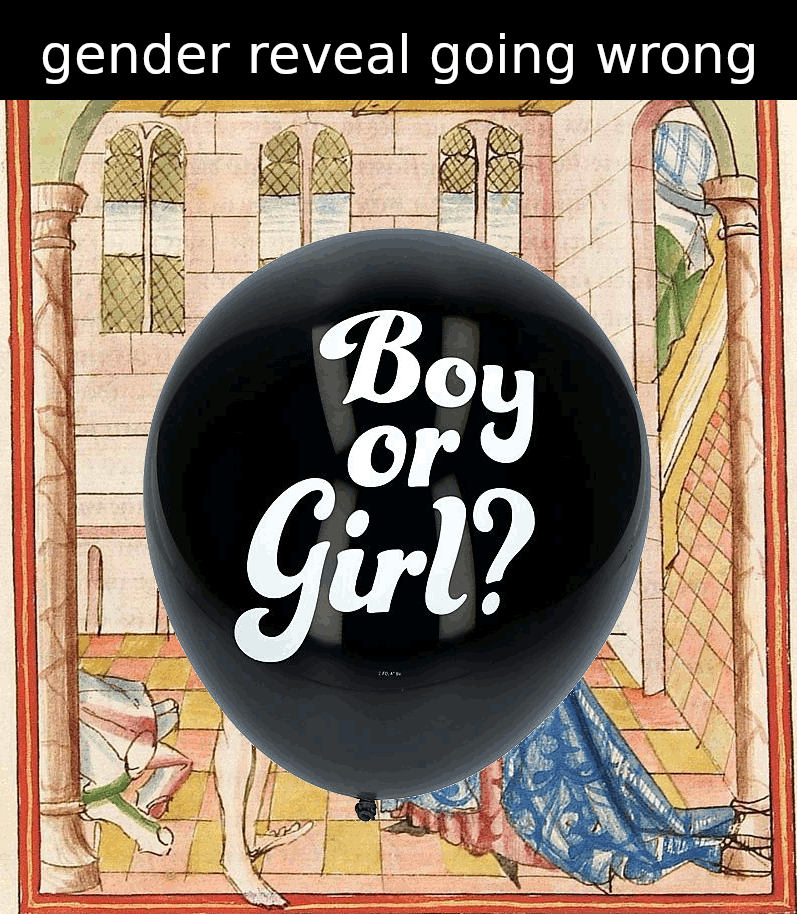Verrassingen
Gender reveal going wrong

Travelling alone was very dangerous for women in the Middle Ages. For this reason, some women disguised themselves as men. This motif is also very common in medieval literature and is played out in many variations. It plays a special role in a late medieval German prose text from circa 1435, Herzog Herpin (Duke Herpin). Duke Herpin has to flee Charlemagne’s court with his pregnant wife Alheit. While fleeing, labour sets in, and Herpin leaves to get help. However, the duchess gives birth to her child before her husband is back. Shortly after giving birth, she is kidnapped by robbers and has to leave her baby behind. Luckily, the duchess is soon able to free herself and, disguised as a man, she finally arrives at the court of the pagan king of Toledo. Nobody suspects she is a woman. At the court, she serves as a kitchen boy for many years. Later, with God’s help, Alheit, disguised as a knight, defeats a giant who threatens the city. The king’s daughter falls in love with the victorious knight and tries to seduce him. Alheit can only save herself from her advances by disrobing and clearly proving that she is not a man. The king’s daughter is very surprised and shocked. From a modern perspective, it seems rather surprising that, and not only in this text, cross-dressing can be so successful over many years.
Bernd Bastert
Further reading
Bloh, Ute von. “Gefährliche Maskeraden. Das Spiel mit der Status- und Geschlechtsidentität (Herzog Herpin, Königin Sibille, Loher und Maller, ‚Huge Scheppel)”, Zwischen Deutschland und Frankreich. Elisabeth von Lothringen, Gräfin von Nassau-Saarbrücken, eds: W. Haubrichs et al. St. Ingbert, Röhrig Universitätsverlag, 2002: 495–515.
Image
The image is from a 15th-century manuscript of Herzog Herpin: Heidelberg, Universitätsbibliothek, Cod. Pal. germ. 152, fol. 34v.

